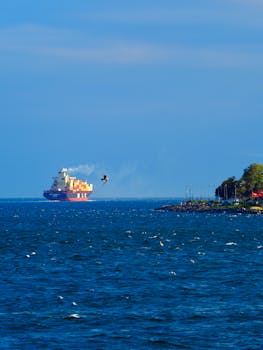+17162654855
+17162654855
IMR Publication News serves as an authoritative platform for delivering the latest industry updates, research insights, and significant developments across various sectors. Our news articles provide a comprehensive view of market trends, key findings, and groundbreaking initiatives, ensuring businesses and professionals stay ahead in a competitive landscape.
The News section on IMR Publication News highlights major industry events such as product launches, market expansions, mergers and acquisitions, financial reports, and strategic collaborations. This dedicated space allows businesses to gain valuable insights into evolving market dynamics, empowering them to make informed decisions.
At IMR Publication News, we cover a diverse range of industries, including Healthcare, Automotive, Utilities, Materials, Chemicals, Energy, Telecommunications, Technology, Financials, and Consumer Goods. Our mission is to ensure that professionals across these sectors have access to high-quality, data-driven news that shapes their industry’s future.
By featuring key industry updates and expert insights, IMR Publication News enhances brand visibility, credibility, and engagement for businesses worldwide. Whether it's the latest technological breakthrough or emerging market opportunities, our platform serves as a bridge between industry leaders, stakeholders, and decision-makers.
Stay informed with IMR Publication News – your trusted source for impactful industry news.
Energy

**
Global ocean freight rates are experiencing a sharp increase, particularly in the Middle East, driven by escalating tensions surrounding Iran and the crucial Strait of Hormuz. This vital waterway, through which a significant portion of the world's oil and gas passes, is facing heightened security concerns, leading to increased insurance premiums, rerouting of vessels, and a general surge in shipping costs impacting businesses worldwide. This article delves into the complexities of this situation, examining the impact on various stakeholders and exploring potential future scenarios.
The Strait of Hormuz, a narrow waterway separating Iran and Oman, is a critical artery for global maritime trade. Approximately one-fifth of the world's traded oil transits this strategically important passage, making it a highly sensitive geopolitical area. Any disruption to the flow of traffic through the Strait of Hormuz can have significant repercussions on global energy markets and, by extension, the global economy. The recent increase in tensions involving Iran has intensified anxieties about potential disruptions.
Keywords: Strait of Hormuz, shipping rates, oil prices, Iran, Middle East, ocean freight, maritime security, geopolitical risk, global trade, container shipping, supply chain disruption
Recent events involving Iran, including increased military activity and heightened rhetoric, have spurred concerns among shipping companies and insurers. These concerns are not unfounded, given Iran's history of disrupting maritime traffic in the region. The uncertainty surrounding potential future actions has resulted in a surge in demand for higher risk insurance premiums, and a reluctance of some shipping lines to transit the Strait of Hormuz altogether.
This reluctance, coupled with the increased demand for alternative, often longer, routes, directly translates into higher freight costs for importers and exporters. This is especially true for businesses involved in the import and export of goods within the Middle East and to and from Asia, Europe, and North America.
Keywords: Iran sanctions, maritime insurance, shipping insurance, risk assessment, vessel rerouting, alternative routes, Suez Canal, Bab el-Mandeb, container freight rates, dry bulk shipping, tanker rates
The escalating freight rates stemming from the heightened risks in the Strait of Hormuz pose significant challenges for businesses globally. Increased shipping costs are likely to lead to higher prices for consumers, potentially contributing to inflation. Supply chain disruptions are also a major concern, with delays and potential shortages of goods becoming increasingly probable.
With the Strait of Hormuz posing an increased risk, shipping companies are exploring alternative routes. However, these alternatives often involve longer journeys, higher fuel consumption, and increased transit times. The Suez Canal and the route around the southern tip of the Arabian Peninsula (using the Bab el-Mandeb Strait) are among the alternatives being considered, each presenting its own set of challenges and increased costs.
The longer distances translate to higher fuel costs, adding to the overall expense. Moreover, these alternative routes might have limited capacity, potentially leading to further delays and congestion. The overall impact on global supply chains remains a serious concern.
The insurance industry plays a vital role in mitigating the risks associated with shipping in the Strait of Hormuz. The increased risk perception has resulted in a significant rise in insurance premiums for vessels transiting the area. Shipping companies are absorbing a portion of these increased costs, but a substantial part is being passed on to the shippers, further exacerbating the rise in freight rates. Detailed risk assessments are now more critical than ever before for businesses involved in international trade.
The future of shipping rates in the Middle East remains uncertain. The situation in the Strait of Hormuz is inherently unpredictable, and any escalation of tensions could lead to further increases in freight rates and even more significant supply chain disruptions. International efforts to de-escalate tensions are crucial to stabilizing the situation and mitigating the negative impacts on global trade. Continued monitoring of geopolitical developments in the region and careful risk assessment are critical for businesses seeking to navigate the complexities of this evolving landscape.
Keywords: Global shipping, freight market analysis, supply chain management, risk mitigation, geopolitical analysis, international trade, economic impact
The ongoing situation in the Strait of Hormuz serves as a stark reminder of the interconnectedness of global trade and geopolitical stability. The unpredictable nature of the current environment underscores the need for businesses to develop robust strategies to manage risk and adapt to the fluctuating conditions within the global shipping market. The future remains uncertain, and careful monitoring of the situation is paramount for all stakeholders involved.